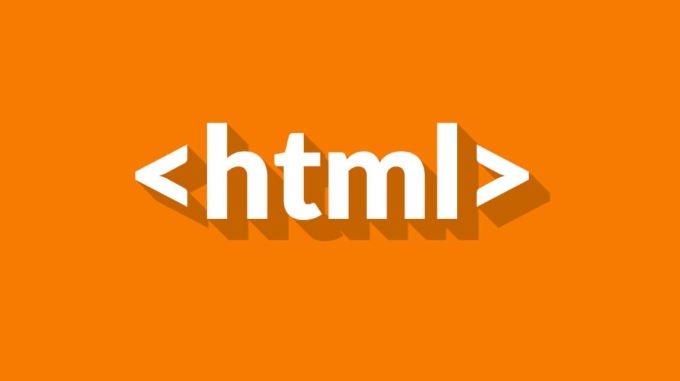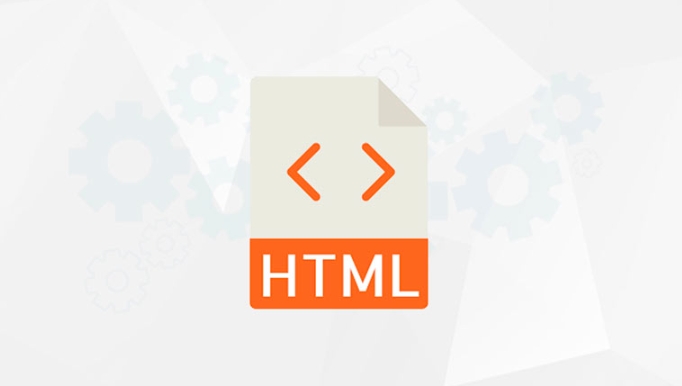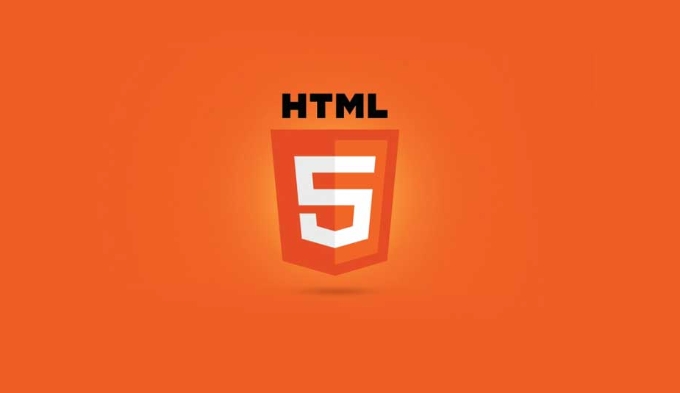How to debug HTML code in Google Chrome Developer Tools?
Jul 11, 2025 am 01:46 AMThe key to debugging HTML code is to master several core functions of Chrome DevTools. 1. Check the element structure: quickly locate the HTML position by right-clicking "Check", expand the node to view the nested structure, and double-click modifying content for temporary testing; 2. View and modify styles: View the applied CSS rules on the right side of the Elements panel, disable a certain style to observe the impact, or add a new style to test the effect; 3. Use the console to operate the DOM and execute JS, such as obtaining elements, modifying content, and testing whether the button event takes effect; 4. Responsive design debugging: Use the device toolbar to simulate different screen sizes, and comprehensively analyze layout problems with the box model display and the Computed style panel.

Debugging HTML code is not actually mysterious, especially with the help of Chrome Developer Tools (DevTools). It allows you to view page structure, modify styles, check element status, and even simulate the performance of different devices in real time. The key is to master several common functions and operation logic.

Check element structure
The easiest way to open DevTools is to right-click any element on the web page and select "Inspect". This allows direct location of the element in HTML.

In the Elements panel, the HTML structure is on the left and the CSS style of the element is displayed on the right. you can:
- Expand or collapse nodes to view nested structures
- Click the small arrow next to the label name to quickly jump to the corresponding style
- Double-click the HTML content directly to make temporary modifications (note: these changes are only temporary, and the page will be gone if you refresh it)
If you have problems with layout, such as an element not showing as expected, use this panel to quickly confirm whether it is rendered correctly.

View and modify styles
After an element is selected in the Elements panel, all CSS rules applied to this element are listed on the right. Here are a few practical tips:
- View inherited styles : Scroll to the bottom and you can see the styles inherited from the parent, which helps you understand why an element has a specific manifestation.
- Temporarily disable a rule : Click the small check box before the attribute to temporarily close this style and observe the impact on the page.
- Add a new style : Click the number next to "style..." to add a new CSS class to the current element or directly write an inline style to test the effect.
If you find that a style is not effective, it is likely that it is because the priority is insufficient or it is overwritten by other rules.
Quick operation with the console
In addition to the Elements panel, Console (Console) is also a powerful debugging assistance tool. you can:
- Enter
document.querySelector("your-selector")to get an element and view its properties - Modify the DOM content, for example:
element.innerHTML = "new content" - Execute some simple JavaScript to test behavioral logic
For example, if you want to see if a button is correctly bound to the click event, you can enter it in the console:
document.querySelector('button').click()
If the page responds, the binding is successful.
Responsive design and layout debugging
Chrome DevTools also has a built-in device toolbar (shortcut keys Ctrl Shift M or Cmd Shift M) that can simulate various screen sizes. This is very useful for debugging responsive layouts.
You can also enable the "Show Element Box Model" function. When hovering elements, specific values ??of padding, border, and margin will be displayed below the panel to help you understand the box structure more intuitively.
Additionally, use the Computed tab to view all styles that end up applying on the element, including browser defaults and inherited styles.
Basically these commonly used operations. Mastering these parts, you won’t have too much headaches when debugging HTML and CSS.
The above is the detailed content of How to debug HTML code in Google Chrome Developer Tools?. For more information, please follow other related articles on the PHP Chinese website!

Hot AI Tools

Undress AI Tool
Undress images for free

Undresser.AI Undress
AI-powered app for creating realistic nude photos

AI Clothes Remover
Online AI tool for removing clothes from photos.

Clothoff.io
AI clothes remover

Video Face Swap
Swap faces in any video effortlessly with our completely free AI face swap tool!

Hot Article

Hot Tools

Notepad++7.3.1
Easy-to-use and free code editor

SublimeText3 Chinese version
Chinese version, very easy to use

Zend Studio 13.0.1
Powerful PHP integrated development environment

Dreamweaver CS6
Visual web development tools

SublimeText3 Mac version
God-level code editing software (SublimeText3)

Hot Topics
 Explain the purpose of the role attribute in ARIA.
Jun 14, 2025 am 12:35 AM
Explain the purpose of the role attribute in ARIA.
Jun 14, 2025 am 12:35 AM
ARIA's role attribute is used to define the role of web elements and improve accessibility. 1. Role attribute helps assistive technology to understand the functions of elements, such as buttons, navigation, etc. 2. Use role attributes to assign specific roles to non-semantic HTML elements. 3. The role attribute should be consistent with the element behavior and be verified by the accessibility tool test.
 HTML and Design: Creating the Visual Layout of Websites
Jun 14, 2025 am 12:39 AM
HTML and Design: Creating the Visual Layout of Websites
Jun 14, 2025 am 12:39 AM
How to create a website layout? 1. Use HTML tags to define the content structure, such as, ,. 2. Control styles and positions through CSS, using box model, float or Flexbox layout. 3. Optimize performance, reduce HTTP requests, use cache and optimize images, and ensure responsive design.
 How do I stay up-to-date with the latest HTML standards and best practices?
Jun 20, 2025 am 08:33 AM
How do I stay up-to-date with the latest HTML standards and best practices?
Jun 20, 2025 am 08:33 AM
The key to keep up with HTML standards and best practices is to do it intentionally rather than follow it blindly. First, follow the summary or update logs of official sources such as WHATWG and W3C, understand new tags (such as) and attributes, and use them as references to solve difficult problems; second, subscribe to trusted web development newsletters and blogs, spend 10-15 minutes a week to browse updates, focus on actual use cases rather than just collecting articles; second, use developer tools and linters such as HTMLHint to optimize the code structure through instant feedback; finally, interact with the developer community, share experiences and learn other people's practical skills, so as to continuously improve HTML skills.
 How do I use the element to represent the main content of a document?
Jun 19, 2025 pm 11:09 PM
How do I use the element to represent the main content of a document?
Jun 19, 2025 pm 11:09 PM
The reason for using tags is to improve the semantic structure and accessibility of web pages, make it easier for screen readers and search engines to understand page content, and allow users to quickly jump to core content. Here are the key points: 1. Each page should contain only one element; 2. It should not include content that is repeated across pages (such as sidebars or footers); 3. It can be used in conjunction with ARIA properties to enhance accessibility. Usually located after and before, it is used to wrap unique page content, such as articles, forms or product details, and should be avoided in, or in; to improve accessibility, aria-labeledby or aria-label can be used to clearly identify parts.
 How do I create a basic HTML document?
Jun 19, 2025 pm 11:01 PM
How do I create a basic HTML document?
Jun 19, 2025 pm 11:01 PM
To create a basic HTML document, you first need to understand its basic structure and write code in a standard format. 1. Use the declaration document type at the beginning; 2. Use the tag to wrap the entire content; 3. Include and two main parts in it, which are used to store metadata such as titles, style sheet links, etc., and include user-visible content such as titles, paragraphs, pictures and links; 4. Save the file in .html format and open the viewing effect in the browser; 5. Then you can gradually add more elements to enrich the page content. Follow these steps to quickly build a basic web page.
 What is an HTML tag?
Jun 13, 2025 am 12:36 AM
What is an HTML tag?
Jun 13, 2025 am 12:36 AM
HTMLtagsareessentialforstructuringwebpages.Theydefinecontentandlayoutusinganglebrackets,ofteninpairslikeand,withsomebeingself-closinglike.HTMLtagsarecrucialforcreatingstructured,accessible,andSEO-friendlywebpages.
 How do I create checkboxes in HTML using the element?
Jun 19, 2025 pm 11:41 PM
How do I create checkboxes in HTML using the element?
Jun 19, 2025 pm 11:41 PM
To create an HTML checkbox, use the type attribute to set the element of the checkbox. 1. The basic structure includes id, name and label tags to ensure that clicking text can switch options; 2. Multiple related check boxes should use the same name but different values, and wrap them with fieldset to improve accessibility; 3. Hide native controls when customizing styles and use CSS to design alternative elements while maintaining the complete functions; 4. Ensure availability, pair labels, support keyboard navigation, and avoid relying on only visual prompts. The above steps can help developers correctly implement checkbox components that have both functional and aesthetics.
 How do I minimize the size of HTML files?
Jun 24, 2025 am 12:53 AM
How do I minimize the size of HTML files?
Jun 24, 2025 am 12:53 AM
To reduce the size of HTML files, you need to clean up redundant code, compress content, and optimize structure. 1. Delete unused tags, comments and extra blanks to reduce volume; 2. Move inline CSS and JavaScript to external files and merge multiple scripts or style blocks; 3. Simplify label syntax without affecting parsing, such as omitting optional closed tags or using short attributes; 4. After cleaning, enable server-side compression technologies such as Gzip or Brotli to further reduce the transmission volume. These steps can significantly improve page loading performance without sacrificing functionality.






